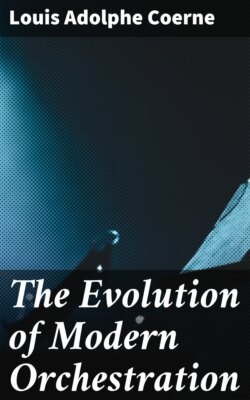Читать книгу The Evolution of Modern Orchestration - Louis Adolphe Coerne - Страница 8
II.
ОглавлениеThe next step to record is that of incipient harmonic effects, musical notation, the principles of design. And for centuries the art was now developed exclusively under the beneficent patronage of the Roman Church—persistently along vocal lines. For the Church adolescent discountenanced anything suggestive of pagan worship, or traceable to depraved Roman orgies. Consequently instrumental evolution lay quiescent. This was the age of dreary speculation, of highly ingenious and elaborately scientific artifice. Yet the results were but puerile. For even such rudiments of modern musical grammar as are readily mastered in our day by a mere child, were far beyond the perspective of the early scholastic monks, who arrived at a few tangible results only by the most circuitous methods. Nevertheless progress, though sluggish, is to be traced in logical sequence.
Beginning with the establishment of singing-schools by Pope Sylvester, and the Antiphons and Hymns of Ambrosius in the fourth century, it is but necessary to recall the documents of Boëtius and of Isadore in the sixth century, the reforms of the Gregories in the seventh and eighth, the sequentiae of Notker in the ninth. More specific were the crude attempts at harmony in the ninth and tenth centuries as typified by Hucbald's organum; Guido d'Arezzo's notation in the eleventh; finally the adoption of mensural writing as attributed to Franco de Cologne, thirteenth, and Johannes de Muris, fourteenth century.
Thus under the guardianship of the Church, and upon a basis of what has ever been known as the Gregorian Chant, a decade of centuries had been consumed in learning to perceive and to apply the fundamentals of melody and of harmony, to discover an adequate interpreter, notation, and an accurate though flexible regulator, rhythm.
